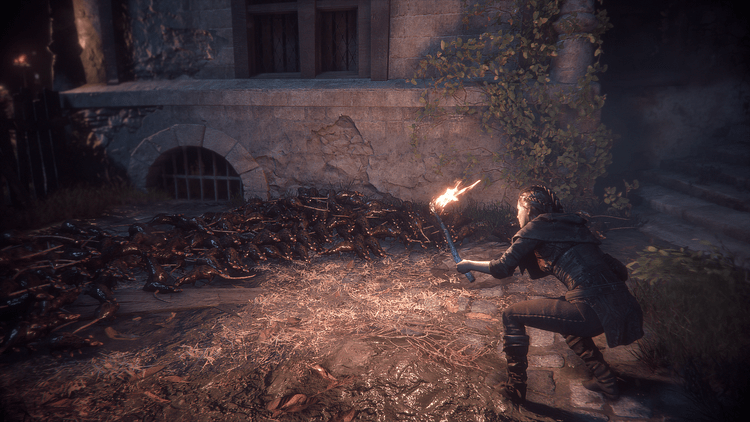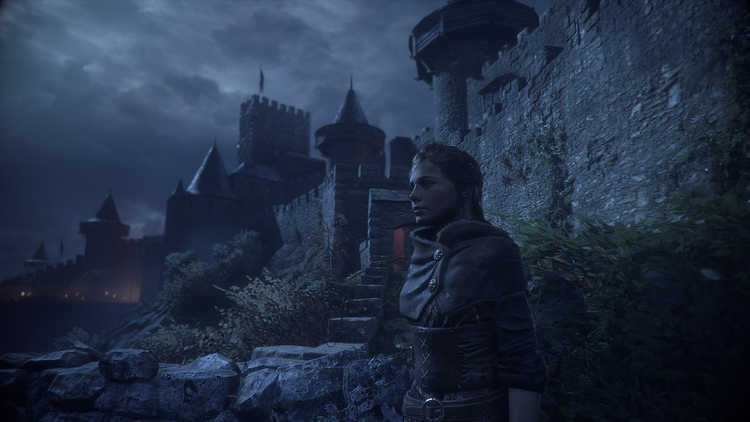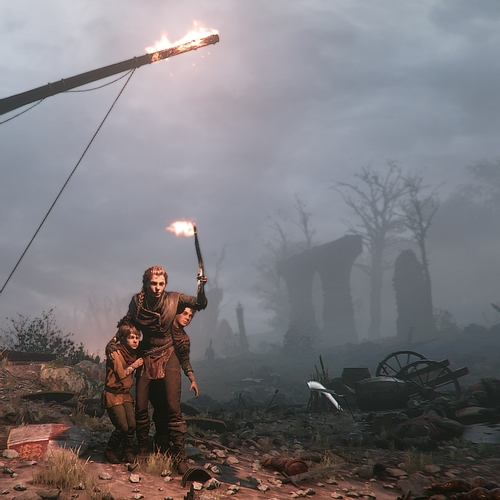A Plague Tale: Innocence is a true masterpiece of interactive storytelling. The video game (console versions on Amazon, PC version on Steam) takes the player back to medieval France. The country is troubled by both the Hundred Years' War and the Black Death. The player controls Amicia de Rune, the teenage daughter of a local noble family brutally murdered by the Inquisition. Orphaned and homeless, she takes care of her five-year-old brother Hugo de Rune who is suffering from a mysterious ailment called "Prima Macula".
The two children are on the run from the Inquisition (who are after Hugo), they are marauded by local townsfolk who blame them for the plague, and they have to survive billions of rats who eat people alive but who are afraid of fire.
This is a survival game where sneaking and avoiding enemies is more important than combat. Amicia's only weapon is her sling, which is of limited use against the knights of the Inquisition. The game is clearly targeted at adults and I would not recommend it for children, as it is both frightening and sometimes disturbing, both in terms of visuals and emotional storytelling.
Graphics
The game's depiction of the southern French region of Guyenne during the late Middle Ages is very believable, beautiful, and very moody. While the depiction of the medieval world feels very authentic, you may have already guessed that the game is not a realistic depiction of the plague; everything is over the top, whether it is the billions of rats, a scene with hundreds of pig carcasses piled up high as a house, or a battlefield with thousands of dead (and millions of rats). Also, there are supernatural things happening (without wanting to reveal too much).

The rats in the game will eat anyone alive who walks into them without an aura of light. Our heroes have to go through catacombs, battlefields, caves... all filled with rats. Burning sticks, strategically placed lamps, and alchemical potions come to the rescue.
Later on, the children gain access to alchemy, allowing Amicia to craft potions that create light (to push rats away), put out fire (to let rats come), or make guards fall asleep. Navigating the rats is one of the game's challenges.
Emotions
Emotionally, the game truly shines. This is not a game of mindless killing, but a story of family, friendship, and human relationships. At one point, Hugo learns that Amicia lied to him, but as he is only five years old he does not understand that she only wants to protect him... which has terrible consequences. This is one of the few games where the player feels truly sad when bad things happen.

Throughout the game, Amicia and Hugo make new friends who help them along the way. There is a young student of alchemy who helps them create potions, explosives, and poisons. Two thieves join them, helping them escape from a French army camp. A smith's son lends them his incredible strength.
What is interesting is that all of the "good guys" are children, fighting against heavily armoured knights. Head-on they would not stand a chance, so the only way to survive is to outsmart them.
Audio
As you can see in the screenshots, the game's graphics are amazing. Where the game really shines is its audio. The music is mainly cello-driven, with melancholic or spooky melodies, riffs, and soundscapes. Very atmospheric, indeed!
Additionally, the voice acting is amazing, at least in the English version of the game. The characters in the game feel authentic, particularly the five-year-old Hugo stands out as extremely believable. Neither the French nor the German voice acting is particularly good, unfortunately.
Summary
In summary, this game is highly recommended. As long as you are not squeamish about rats and you can deal with some gore, this game is an excellent experience of interactive storytelling. The medieval setting is believable (but not realistic), and you will truly get transported to a melancholic and spooky world.









